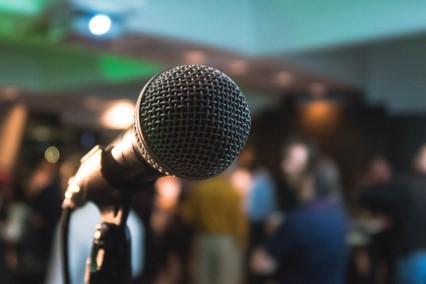
ΑΙhub.org
An introduction to science communication at #NeurIPS2023

We’re pleased to announce that we will be giving a short introduction to science communication for AI researchers at NeurIPS this year. This will be held in person on Monday 11 December from 12:45. If you are attending the conference and fancy finding out how you can communicate your research to a general audience in different formats, then please do join us. Following an hour-long introductory talk, there will be an optional, open, drop-in session where you can try out some of the things you learnt in the course, ask any sci-comm questions, and chat about your ideas and stories.
Timetable:
- 12:45 – 13:45 Talk: science communication for AI researchers – introductory training
- 14:00 – 16:00 Open drop-in session for one-on-one support
Location: Room 235/236, New Orleans Ernest N. Morial Convention Center.
About the session
One of the challenges facing the field of AI is its portrayal in the media, which leads to misconceptions among policy makers, business leaders, and the general public alike. By communicating about AI in a clear, informed, and measured manner we can help to combat the flow of misinformation and convey the reality of today’s technology.
We will guide participants on how to quickly shape the story of their AI research. We’ll focus on how to structure this research story to form a blog post. Participants will learn how to explain their research to a general audience in a clear and concise manner. We will also touch on how to find suitable images and how to avoid hype when promoting research.
Agenda
- The importance of AI communication.
- Different ways of doing science communication.
- There are many ways to communicate your work, ranging from social media to long-form articles. We will cover a few of these.
- Finding your story.
- How to produce a short summary of your research: we will take a step-by-step, guided approach to show you how to build a structured outline of your research story. This outline of the key points of a research story could be used to communicate work on a social media platform.
- How to expand your outline to write a complete post: the next step is to expand the structured outline to form a complete post. We’ll give guidance, with worked examples, on how to do this.
- How to find and use suitable images.
- We will guide on how to source, use, and credit suitable AI images to accompany your work.
- How to avoid hype when communicating your research.
- Hype around AI sets inflated expectations about the technology, drives unnecessary fears and detracts from the meaningful discussions that need to happen now, about the technology actually being developed today. We will present some guidelines on how you can best avoid the hype when promoting your work.
If you’d like to find out more, contact Lucy Smith at aihuborg@gmail.com, or see our tutorial webpage.
tags: NeurIPS, NeurIPS2023











